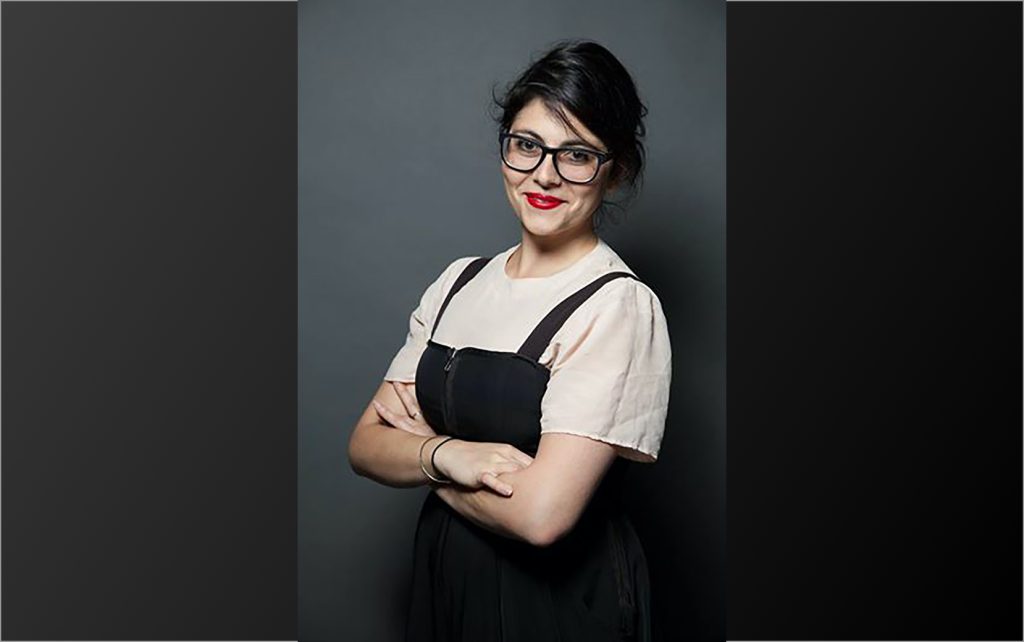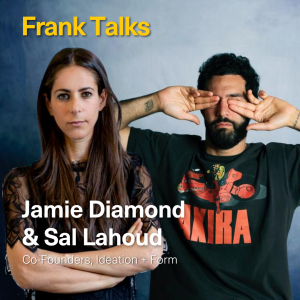This week we sit down with Sarah Lehat, who is the Director of Development for the Tel Aviv Museum of Art American Friends (TAMAF). Before joining TAMAF, Sarah spent three years as Communications Director at TOTAH, where she was instrumental in helping David Totah position a new kind of gallery in New York’s Lower East Side. Prior to TOTAH, Sarah founded and ran Art Antidote, an independent Art Communications Consulting Firm, which worked with small New York City galleries and foundations, as well as directed the estate of late artist Leo Bates, for which she compiled, researched and catalogued the archives. To her work in the arts, Sarah brings a philanthropic focus and a penchant for cross-cultural pollination, borne of her international upbringing, between Los Angeles, Israel and France. Please enjoy reading Sarah’s Frank Talk below!
What was your first job in the Arts?
My first job in the arts was as Associate Director at Sylvia White Gallery in Ventura, CA.
What was the most useful or important thing you learned at that job?
I encountered the strength of character necessary to work in the field and had to determine whether I myself was equipped with it.
Tell us a little more about yourself. When did you realize you wanted to pursue a career in this industry?
I studied Architecture in Israel, worked in the Interior Design industry, and ultimately understood that the sense of play and invention that was such a strong part of our education was missing from the majority of roles in the field.
I went hunting for that, as well as for tools to understand the economics of the art market – a sort of mysterious golden egg I was intent on cracking.
What do you do now?
I am Director of Development for the Tel Aviv Museum’s American Friends.
Where are you from?
Los Angeles, CA.
What is the arts community like there?
LA is a very warm, open arts community. There is a camaraderie among the artists, museum professionals, critics, etc… I suppose because it’s too small a pool and job market to be defensive or cagy.
Has where you come from shaped what you do in the arts today?
Absolutely. I am a first generation American, of Algerian and Ukrainian Jewish descent, which has given me multiple lenses with which to view national and ethnic histories. Studying in Israel obviously gave me inroads in the Israeli arts community, while Architecture gave me a very analytical problem-solving orientation toward any professional role I’ve taken on.
What is the best piece of advice you can give about working in the art world?
Be selective about the work you take on. There are a lot of bogus people and projects out there who are in it for ego, the high, etc. More importantly, remember to have gratitude for and give credit to those you’ve worked with.
What is one of your greatest accomplishments in your career so far?
Since I came on board in August 2018, I have grown TAMAF’s membership by 241% and increased our annual grants to the museum from 380,000 in 2018 to 1.7 million USD, this year, to date.
What has been a challenge for you?
I am constantly meeting new people. Without my associate Hanna, who does all my data heavy lifting, inputting everyone into the donor database that I created out of hundreds of excel spreadsheets, I’d be dead.
Team members who care are key.
What is something you do every day at work?
Introduce people to one another. It’s one of the ways I’m proudest I add value to the artistic community.
What is one of the weirdest things you have had to do on the job in your career?
It’s all weird! I honestly don’t recall.
What defines a good employee? What defines a good boss?
- A good employee is able to order given tasks into a hierarchy of priorities and to communicate questions openly, before executing them. They are brave and not afraid of suggesting more useful alternatives to systems in place.
- A good boss is a good leader and a good manager. He/she commends her employee for the initiative he takes and rewards good performance by giving credit to the employee, which in turn serves to incentivize further good performance.
What do you think makes a person hirable?
Part of hiring is personality. We’re human. We need to have chemistry with our team members. We spend the majority of our time with our team (more sometimes than with our life partners!) and need to enjoy each other even when tasks are unpleasant.
Most important is a keen desire to learn. No one ever really has all the skills he needs to accomplish his professional role, but the hire that has a good network of mentors and colleagues and knows how and when to ask will go far.
What is your advice to making yourself stand out in your workplace?
Be kind, generous and considerate. Be yourself.
What are things you can do proactively boost your CV?
I would send around to friends and colleagues for feedback. You never know who knows someone who’s looking.
Are there any tips you can give people entering the workforce?
Be patient. It takes time to get your feet wet. And don’t be afraid to work multiple jobs for a bit to make ends meet. Much of art work is consulting and freelance and it’s the most common way to prove yourself in our industry.
In your experience, what are things to do and things to avoid during an interview?
I would avoid being over eager. You’re interviewing them as much as they’re interviewing you.
What is the best exhibition you have seen in the last year?
“Shall we dance”, an exhibition I saw in January at the Mucem in Marseille, was incredible. I walked in straight to the Mika Rottenberg piece I love, which is in the collection of the Tel Aviv Museum of Art. The kinetic exhibition design was brilliant. Seesaws instead of benches. Floors that curved up and around like little hills you could roll down. Nooks to squeeze into. Film projected onto beaded curtains that moved when exhibition goers passed through and more … very in line with the concept.
If you could own a work by 5 different artists, who would be in your collection?
I do collect artists such as Keren Benbenisty, Tamar Ettun, Mara De Luca, Dana Powell and Alex Sewell – collecting generally in a category I call “buy a piece that pays a month’s rent.” Artists I adore whom I do not own are: Diebenkorn, Paul Klee, Alighiero Boetti, Giuseppe Penone and Luisa Rabbia.




